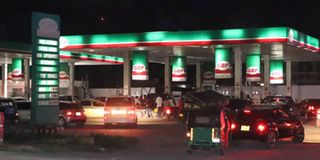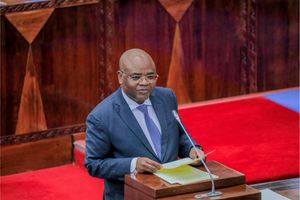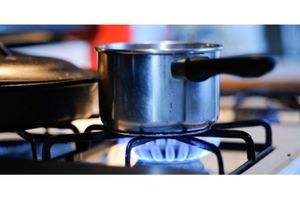Uganda’s East African fuel puzzle

What you need to know:
- Uganda has had fuel shortages, the most notable one of recent years happening at the end of last year and early 2022, after a dispute over testing truck drivers for Covid-19 at the border led to slowdowns and chaos.
While criticising the Kenya government’s handling of the ongoing disruption to fuel supply in the country, Amani National Congress (ANC) party leader Musalia Mudavadi wondered why the country was struggling yet Uganda had fuel.
“We are seeing people lining up to get fuel in petrol stations. When was the last time you saw that? It last happened in the 1990s when we had price control. Our neighbouring country Uganda has fuel all through yet their fuel passes through pipelines in Kenya. Then the government says we have a shortage of petrol. What is that?” Daily Nation quoted Mudavadi as saying.
Part of the answer is in Mudavadi’s statement – price control. Kenya actually still controls fuel prices through the Energy Petroleum and Regulatory Authority (EPRA). Uganda doesn’t.
On Monday, President Uhuru Kenyatta signed the Supplementary Appropriation Bill, enabling the release of Sh34.44 billion (TSh695 billion) to oil marketing companies as subsidy arrears. Uganda’s President Yoweri Museveni doesn’t know what a fuel subsidy is.
Uganda is virtually alone in the region in not subsidising fuel, although it is landlocked.
Mudavadi was correct to say Uganda’s fuel passes through Kenya’s pipelines, but that is beginning to change. Beginning last year, the country started the delivery of some of its petroleum products from Tanzania’s Dar es Salaam port through Lake Victoria, after a 16-year break. The fuel lands in Dar es Salaam and is transported by railway to the Mwanza port, then to Uganda over Lake Victoria. That is nearly 600 kilometres further away from Kampala than Mombasa.
Apart from diversification of routes, it is part of a wider shift in the East African hinterland, which is seeing a revival in the use of Lake Victoria as a transport platform. The larger volumes of Ugandan fuel over the lake currently originate from Kisumu Port.
Uganda has had fuel shortages, the most notable one of recent years happening at the end of last year and early 2022, after a dispute over testing truck drivers for Covid-19 at the border led to slowdowns and chaos. Fuel truck queues of up to 80 kilometres long formed on the Kenyan side of Malaba waiting to enter.
If that had been in Kenya, there would have been no fuel at the petrol pumps. There were no dry pumps in Uganda because fuel stations responded by hiking prices dramatically, in some places by as much as 50 per cent to Uganda shillings 6,250 (KSh203 or TSh4,089) for a litre of petrol. These wild swings work to manage demand and supply and keep the queues away. Such a jump in Kenya would result in great unrest or even a revolution.
The prices have since dropped to USh5,000 (KSh162), and closer to Ush4,000 in some places given the freewheeling and autonomous pricing system. There were howls of protest, and criticism of the government for not doing something to dampen prices, but a lot of the fury was aimed at petrol companies. There was not much demand for the government to pour in subsidies, or control fuel prices, because that expectation is not there. Over the years, the idea that businesspeople, rather than politicians and bureaucrats are much better at managing things like fuel supplies has taken deep hold among the elite in the country.
But there is more. The Kenyan economy is just over two times bigger than Uganda’s. However, that litre of petrol that sells in Uganda for the equivalent of KSh162 today, is unthinkable in Kenya where it currently is about Sh135.
Ugandans are able to take greater pain, for historical reasons. From about 1972 when the military dictator Idi Amin expelled Asian nationals, the country’s economy nose-dived. There was so much scarcity, virtually all consumer goods from soap, toothpaste, sugar, milk, beer, and flour, to fuel were rationed.
There were government departments that wrote out “allocation chits” that the few connected and powerful people would take to a shop, a factory, or a petrol station, and get their supplies. The rest of the people did without or bought from the black market where the goods sold for up to five times higher. In fact, those who got the allocation chits didn’t have to collect the goods. A secondary market developed selling allocation chits. The person who eventually picked the allocated crates of beer could be the fourth buyer of the chit.
All that ended in 1988, two years after Museveni took power, in easily the most frenzied bout of privatisation and liberalisation Africa has seen. So, Ugandans are not only able to take greater pain, but philosophically, for the dying generation in power, the scars of the age of scarcity run too deep for them to gamble on letting the state meddle in things like fuel.
Additionally, the relatively low tax and other economic structures soak up the high cost of fuel in ways not possible in Kenya. If a Ugandan and Kenyan imported similar used cars from the same dealer in Japan, brought them through Mombasa, and the Ugandan drove hers to Uganda and registered it, she could still re-export it to Kenya and make a 15 per cent profit.




